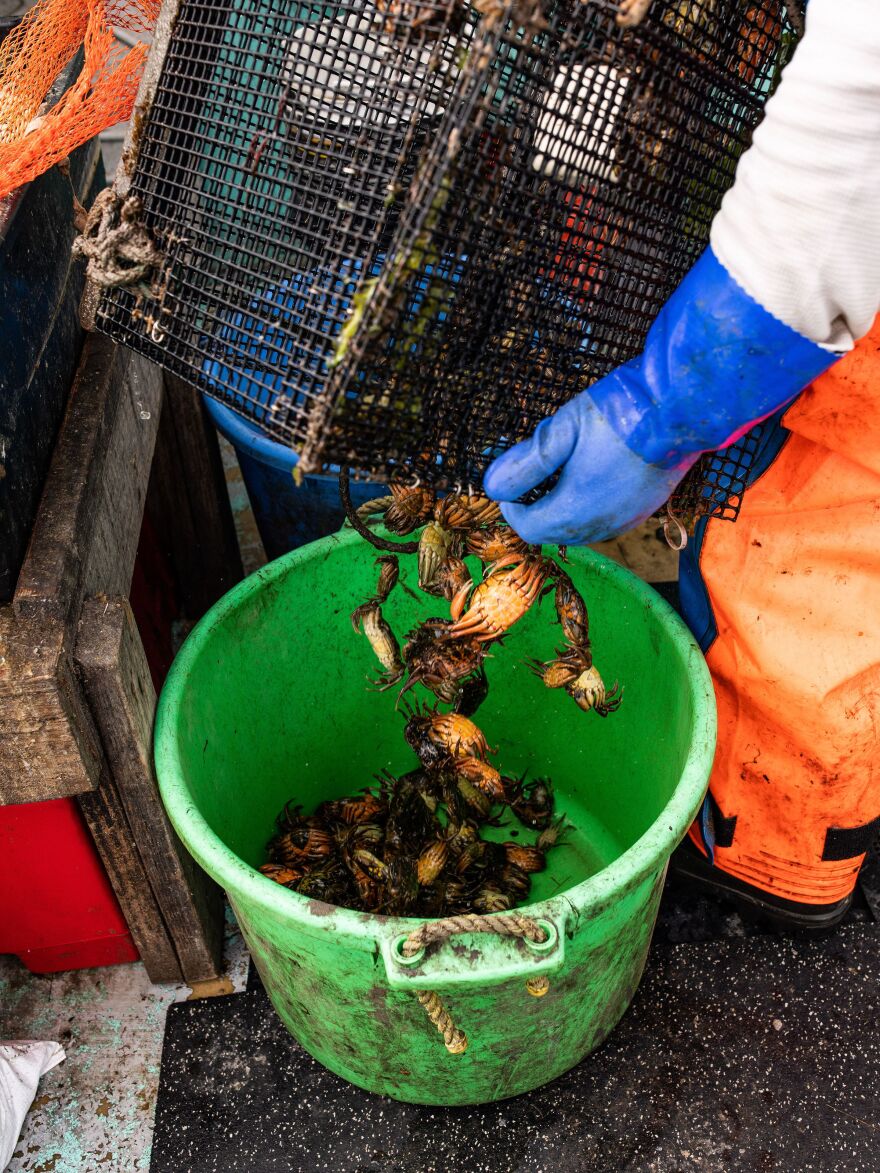They're small. They're green. They're crustaceans.
And now, they're in whiskey.
Green crabs are the invasive pests that have plagued North America's marine ecosystems for more than 200 years. A New Hampshire distillery is taking on the problem by using them to make green crab-flavored whiskey. Green crabs are so abundant that it's going to take a lot more than whiskey to curb the population, but some hope bringing awareness to the issue will lead to creative solutions.
Tamworth Distilling's Crab Trapper whiskey gets some of its flavor from green crabs caught off the coast of New Hampshire. The crabs hitched a ride to the United States on ships coming from Europe around the 1800s. Here, they eat tons of shellfish and destroy estuaries and fish habitats.
Will Robinson, the product developer at Tamworth Distilling who had the idea for the project, said the crabs were cleaned and prepared just like any other crab you might order at a restaurant.

"People are going to hear crab whiskey, and I'd venture to say three-quarters of them are going to go, 'No, absolutely not,'" he said. "But if you can get them to taste it, they totally change their tune for the most part."
First, they make a crab stock. Then, they distill it using a vacuum still — a glass machine that allows for precise temperature control.
"It looks like a crazy piece of laboratory equipment," Robinson said. "It preserves the flavor and aroma molecules that would get destroyed if we were to boil it."
The stock is mixed with spices – like mustard seed, coriander, and cinnamon – then combined with a bourbon base.
Robinson calls it a "thinking, sipping" drink. "It's meant for you to explore your own perception through your olfactory senses."

Each bottle of whiskey uses about a pound of green crabs, but one distillery alone isn't going to make much of a dent in the green crab population. That's because their numbers are out of control, says Dr. Gabriela Bradt, a marine biologist and fisheries specialist at the University of New Hampshire.
"They are probably one of the most successful invasive species that we have in North America, at least in the marine world," she said. "They can eat about 40 mussels a day, just one crab. And so you multiply that by a bazillion, and you have no more clams."
Climate change is making things worse. Warmer ocean temperatures offer more hospitable environments for the invasive crab to thrive.

Still, Bradt said creative projects like Crab Trapper can help address the problem by raising awareness. Her own research focuses on tracking where and when green crabs molt. The idea is that if you can catch them right after they molt, you can cook them like other soft shell crabs and get more people to eat them.
Right now, there's no commercial incentive for crabbers to harvest green crabs on a scale large enough to make an impact, she said. But she hopes new products that use the crab – like fishing bait, whiskey, fish sauce, and more – could change that.
Whiskey is just "the hook," Bradt said, to get people informed. "And the more people hear about it, then we get more and more people who might have a really great, innovative idea that we haven't touched upon."
Copyright 2022 NPR. To see more, visit https://www.npr.org.



